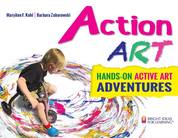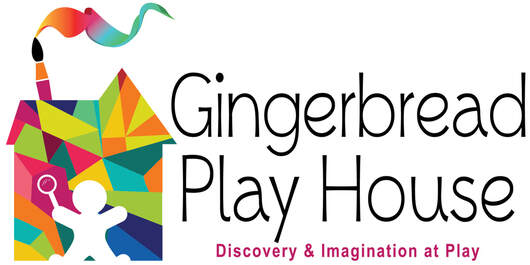"The future belongs to the curious. The ones who are not afraid to try it, explore it,
poke at it, question it, and turn it inside out." - Anonymous
poke at it, question it, and turn it inside out." - Anonymous
STREAM, Loose Parts Play & Sensory Play:
STREAM is an acronym for Science, Technology, Reading & Writing, Engineering, Arts and Math. For preschoolers, STREAM is a unique and holistic approach where activities support the development of pre-science, technology, pre-language arts, engineering, the arts, and pre-math. STREAM learning includes examining shapes, building forts from cardboard boxes, playing “grocery store,”pouring liquids and other materials, filling and emptying containers of different sizes, and mixing paints to create new colors. These are only a few examples. Many of children’s everyday activities use STREAM skills, even if we don’t typically think of them in that way. At Gingerbread Play House children’s development of STREAM skills are fostered by providing learning opportunities and materials that support exploration and discovery.
Science is a way of thinking through experiments, observation, making predictions, asking questions, and deciding how things work. Children are natural scientists. They try to figure out just how the world works by
finding patterns and building theories to explain what they see. Pre-science activities may involve tinkering,
exploring, weighing, measuring, mixing, simple experiments, asking questions and testing things out.
Technology is a way of doing. With learning tools, kids become inventive, identify problems, and make things work. Simple technology tools include pulleys, wheels, levers, scissors, and ramps. They support children’s
cognitive development, because as children play with these tools, they observe and learn from the underlying
cause and effect like how adding wheels below a large object makes it easier to move, or how raising a ramp
makes a ball roll faster.
Reading and Writing - pre-reading skills are the skills your child needs in their arsenal before they learn to
read. The 6 skills include: 1) print motivation, 2) narrative skills, 3) print awareness, 4) vocabulary, 5) phono-
logical awareness, and 6) letter knowledge. Activities here may include storytelling, pretend play, book
handling, show & tell, rhyming/nursery rhymes, singing, name recognition, puzzles, puppets, flannel board
and more!. Pre-writing skills may include using scissors, learning how to hold a crayon/paint brush, lacing &
beading, playdough play, tracing in cornmeal, using clothespins, and more!
Engineering is using materials, designing, crafting, and building – it helps us understand how and why things
work. When children design and build with blocks or put together railroad tracks, they are acting as engineers.
When children construct a fort of snow, pillows, or cardboard, they are solving structural problems. When they
figure out how to pile sticks and rocks to block a stream of water or how objects fit together, they are
engineering.
Arts include visual arts, dance, drama, music, and design. The arts help solve problems creatively. Children
may engage in painting, pretend play, music, and drawing. Art is sensory exploration. Children can feel the
paint on their fingers and see colors change the way paper looks. As they grow, children include symbols in
their art that represent real objects, events, and feelings. Drawing and play-acting allow them to express
what they know and feel, even before they can read or write. Music and dance is also linked to STREAM skills
such as pattern recognition and numeration. Research shows that early experience with creative arts supports
cognitive development and increases self-esteem. .
Math includes exploring measurement, shapes, size, volume, patterns, sequencing, geometry, and spatial
relationships. From birth until age five, children explore everyday mathematics, including informal knowledge
of “more” and “less,” shape, size, sequencing, volume, and distance. Math is a tool children use every day!
Science is a way of thinking through experiments, observation, making predictions, asking questions, and deciding how things work. Children are natural scientists. They try to figure out just how the world works by
finding patterns and building theories to explain what they see. Pre-science activities may involve tinkering,
exploring, weighing, measuring, mixing, simple experiments, asking questions and testing things out.
Technology is a way of doing. With learning tools, kids become inventive, identify problems, and make things work. Simple technology tools include pulleys, wheels, levers, scissors, and ramps. They support children’s
cognitive development, because as children play with these tools, they observe and learn from the underlying
cause and effect like how adding wheels below a large object makes it easier to move, or how raising a ramp
makes a ball roll faster.
Reading and Writing - pre-reading skills are the skills your child needs in their arsenal before they learn to
read. The 6 skills include: 1) print motivation, 2) narrative skills, 3) print awareness, 4) vocabulary, 5) phono-
logical awareness, and 6) letter knowledge. Activities here may include storytelling, pretend play, book
handling, show & tell, rhyming/nursery rhymes, singing, name recognition, puzzles, puppets, flannel board
and more!. Pre-writing skills may include using scissors, learning how to hold a crayon/paint brush, lacing &
beading, playdough play, tracing in cornmeal, using clothespins, and more!
Engineering is using materials, designing, crafting, and building – it helps us understand how and why things
work. When children design and build with blocks or put together railroad tracks, they are acting as engineers.
When children construct a fort of snow, pillows, or cardboard, they are solving structural problems. When they
figure out how to pile sticks and rocks to block a stream of water or how objects fit together, they are
engineering.
Arts include visual arts, dance, drama, music, and design. The arts help solve problems creatively. Children
may engage in painting, pretend play, music, and drawing. Art is sensory exploration. Children can feel the
paint on their fingers and see colors change the way paper looks. As they grow, children include symbols in
their art that represent real objects, events, and feelings. Drawing and play-acting allow them to express
what they know and feel, even before they can read or write. Music and dance is also linked to STREAM skills
such as pattern recognition and numeration. Research shows that early experience with creative arts supports
cognitive development and increases self-esteem. .
Math includes exploring measurement, shapes, size, volume, patterns, sequencing, geometry, and spatial
relationships. From birth until age five, children explore everyday mathematics, including informal knowledge
of “more” and “less,” shape, size, sequencing, volume, and distance. Math is a tool children use every day!
Loose Parts Play is using materials without a predetermined purpose that can be moved, combined, reformed, taken apart, and put back together in numerous ways. Loose parts can be used alone or combined with other materials and can be both manufactured and natural. In any environment, both the degree of inventiveness and creativity, and the possibility of discovery, are directly proportional to the number and kind of variables in it. Expanding children’s access to non-traditional STREAM materials can serve to provide a wider range of learning opportunities in the classroom.
Sensory Play encourages discovery and independent thinking, as well as inspiring imagination and creativity. It builds nerve connections in the brain's pathways, which lead to the child's ability to complete more complex learning tasks. By encouraging the use of all of a child’s senses in play - sight, touch, hearing, taste, smell, motion, and balance - cognitive growth, language development, gross and fine motor skills and other important learning domains are supported! Preschoolers require exposure to activities that stimulate all of these senses, allowing them to dive in and explore new materials and concepts. Sensory play is calming to the child's spirit and soul!
Photo Gallery Above Shows STREAM, Loose Parts & Sensory Play in Action

Process Art Announcement:
I am excited to share with you that seven of our process art experience photos were featured in a teacher-resource book called Action Art by MaryAnn Kohl. Gingerbread Play House feels honored to have been asked to be a part of this latest project. Click the book image for ordering information on Amazon.com.
I am excited to share with you that seven of our process art experience photos were featured in a teacher-resource book called Action Art by MaryAnn Kohl. Gingerbread Play House feels honored to have been asked to be a part of this latest project. Click the book image for ordering information on Amazon.com.
Process Art:
What is Process Art?
It is art that is child-directed, choice-driven, and celebrates the experience of discovery. In process art, the focus lies in the creation of the work, not the outcome. If there is a final product, it is always unique. Children love painting, drawing, forming dough and clay, and exploring art media. Process art provides a natural avenue for fun learning experiences. In art, children can express themselves and experiment outside the box without judgment. Science lessons can be taught through art as children make leaf prints, create a nature collage, fingerpaint or paint on snow!
Process art is developmentally appropriate for young children because it meets them where they are as sensory explorers. Through process art, children: will think creatively, independently and imaginatively; will learn about the physical limitations and possibilities of materials; are encouraged to use creative and critical thinking skills; will gain confidence to realize their own ideas; are motivated to ask questions and experiment; and, will embrace experimentation and mistakes as part of the learning process.
It is art that is child-directed, choice-driven, and celebrates the experience of discovery. In process art, the focus lies in the creation of the work, not the outcome. If there is a final product, it is always unique. Children love painting, drawing, forming dough and clay, and exploring art media. Process art provides a natural avenue for fun learning experiences. In art, children can express themselves and experiment outside the box without judgment. Science lessons can be taught through art as children make leaf prints, create a nature collage, fingerpaint or paint on snow!
Process art is developmentally appropriate for young children because it meets them where they are as sensory explorers. Through process art, children: will think creatively, independently and imaginatively; will learn about the physical limitations and possibilities of materials; are encouraged to use creative and critical thinking skills; will gain confidence to realize their own ideas; are motivated to ask questions and experiment; and, will embrace experimentation and mistakes as part of the learning process.
